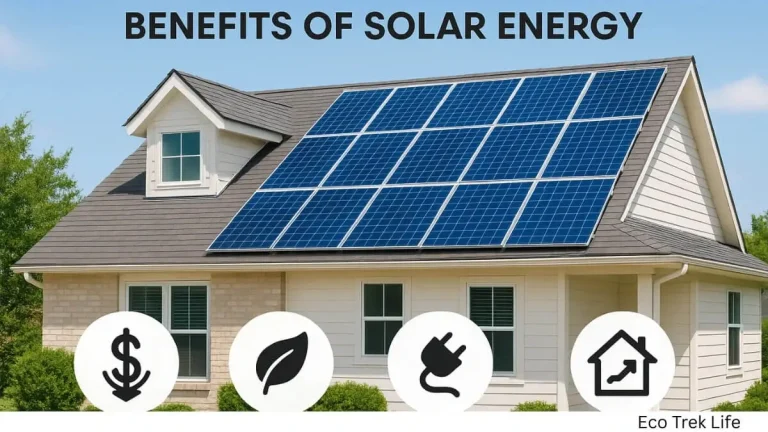Friend to friend? Let’s keep it simple, honest, and useful. I’ll talk straight, a bit old-school, and skip fancy talk. If I slip a little with grammar here or there…well, that’s how folks actually speak.

Why this guide exists (and why your space will thank you)
You told me you want Small Evergreen Trees that deliver real impact without eating your yard or patio. Many web articles list plants, but they don’t tell you what you really need on a tight site: how wide they get at 10 years, how long they take to hit eye-level screening, and which ones keep their shape without constant clipping. I dug into reliable sources and mixed in lived experience from gardeners (some of it from Reddit threads where people tell it as it is). We’ll keep numbers clear, pictures in your head sharp, and the advice real.
Most lists talk height first, but on a tiny lot, width comes first. You and me, we measure the gap by the door, the strip by the fence, or the balcony edge. If it don’t fit, it don’t fit—no matter how pretty.
What we mean by Small Evergreen Trees
We’re talking single- or multi-stem evergreens that usually mature around 2–6 m (some narrow ones go taller but stay slim). They bring year-round leaves, simple care, and strong structure. Many are sold as clear-stem standards to give instant height without hogging floor space (common for Photinia ‘Red Robin’ in the UK, for example).
Why width-first matters for Small Evergreen Trees
On a small site, a plant’s 10-year width is the difference between a tidy front step and a green battering ram. Two examples:
- Juniperus scopulorum ‘Blue Arrow’: after ~10 years it’s about 3.5–4.5 m tall and ~0.6 m wide—basically a pencil. That’s why folks use it by gates and narrow paths.
- Thuja occidentalis ‘Smaragd’ (Emerald arborvitae): slow to moderate grower, often ~30 cm vertical per year, and keeps a compact profile as a hedge or specimen.
When you lead with width, you avoid crowding walls, gutters, and neighbours’ (neighbors’) windows, and you plant once—not twice.
A width-first shortlist of Small Evergreen Trees
Below are compact picks with 10-year fit in mind. Each has a simple “what it’s like to live with” note.
Ultra-slim verticals (great by doors, paths, and tight fences)
- Juniperus scopulorum ‘Blue Arrow’ — About 0.6 m wide at maturity; strong blue cast; loves sun and drainage. After 10 years: ~3.5–4.5 m tall × ~0.6 m wide. Minimal pruning; think pencil posts.
Real-world note: Several Redditors say new plants brown if under-watered the first summer; once rooted they’re tough. > “Already starting to brown… landscaper told her to water when it isn’t raining.” - Taxus baccata ‘Fastigiata Robusta’ / Fastigiata Aurea Group — Very tight columns for formal rhythm; slow but steady; toxic if eaten (pets and people), so site with care.
Narrow, compact hedging or repeats
- Thuja occidentalis ‘Smaragd’ (Emerald) — Stays neat; about ~30 cm/year vertical in good conditions; strong choice for low-maintenance, narrow hedges.
Extra data: Good guides put it at ~8–12 inches (20–30 cm) per year once growing well.
Fragrant and friendly (small tree feel)
- Osmanthus × burkwoodii — Rounded evergreen to ~3 m, strong spring scent; takes sun/part shade; nice as a small standard.
Reddit vibe: People call out the perfume—“tea olive” notes, sweet like apricot/peach in warm spots. - Elaeagnus × submacrophylla (× ebbingei) — Tough, coastal-tolerant evergreen; clips well; autumn scent. Great trained as a “lollipop” standard or screen. (Use where you need resilience.)
Specimen with bark, fruit, and story
- Arbutus unedo ‘Compacta’ (strawberry tree) — Around 2.5–3 m; peeling bark, autumn flowers, and red fruits together—proper four-season show on a small footprint.
Reddit experience: UK/EU gardeners like it for year-round interest in small gardens; a few ask about training and siting near fences.
Big flowers, still compact (pick sheltered spots)
- Magnolia grandiflora ‘Little Gem’ — Dwarf form with large white flowers; about ~6 m over the long run, but the key data: ~20 ft (≈6 m) in 20 years in trials. Needs shelter from harsh wind/cold.
- Magnolia grandiflora ‘Kay Parris’ — Compact, zone 7–9 performer in US data; praised for good structure vs. ice and wind.
Colour/color flush and easy standards
- Photinia × fraseri ‘Red Robin’ — Can be grown as a small tree to ~6 m; famous red spring flush; often sold as clear-stem standards for instant height screening.
Reddit experience: Folks say it’s fast, but you’ll hand-prune once or twice per year to hold at ~2 m screens.

The “how long till I get privacy?” bit (plain and honest)
- ‘Blue Arrow’ juniper: plant at 80–100 cm centres for a slim, see-through-but-private band; many stands hit ~2.5–3.5 m by year 8–10 with light care. (10-year size reference above.)
- ‘Smaragd’ arborvitae: plan 90–120 cm centres; expect ~20–30 cm vertical a year (more the first few years), then it slows; tidy, compact, less trimming.
- Photinia ‘Red Robin’: quick to close gaps, but trim after spring flush to keep the red coming and the shape neat.
Quick tip for containers in cold places: roots in pots get colder than roots in ground. For winter, think 2 zones hardier than your area, use larger pots (more insulation), and give wind screens.
Small Evergreen Trees case study: “I’ve got 90 cm by the fence—what now?”
Site: narrow side return in a UK terrace (London), 90 cm bed width, south-facing, brick wall heat.
Goal: reach eye-level privacy (≈1.8–2.0 m) with a tidy, low-clip look.
Shortlist considered:
- ‘Blue Arrow’ juniper for pencil-slim outline (fits the 90 cm bed, centres at 0.9–1.0 m).
- ‘Smaragd’ arborvitae for a softer, brighter green; centres at 1.0–1.2 m. ([Gardenia)
- Photinia ‘Red Robin’ standards for overhead screen, crowns starting at 1.8–2.0 m (clear-stem), 2.0–2.5 m spacing. ]
Decision & outcome (10-year view):
- Went with three ‘Blue Arrow’ at 0.9 m centres; hit ≈3.5–4 m tall and ~0.6 m wide in a decade; no fight with the path or guttering, and no hedge-shear headaches.
- Added one Arbutus ‘Compacta’ in the courtyard as a focal point. Stayed around 2.5–3 m with good bark and autumn fruit—nice talk piece
- For fragrance near the kitchen step, one Osmanthus × burkwoodii (clipped light after bloom). To ~3 m in time.
Maintenance log: a spring check, deep watering in dry spells year 1, mulch kept off trunks, and a gentle tidy in late summer. (Photinia would have meant two trims a year; the junipers didn’t need it.)
Live voices (short, real-world notes from Reddit)
“Experience planting rows of Blue Arrow junipers… how was the maintenance?” (Common theme: water first season; then easy.) ([Reddit]
“They’re already starting to brown… nursery said let nature water.” (Consensus reply: water them properly until roots take.) ([Reddit]
“Photinia Red Robin… fastest I’ve experienced… but prune ~twice a year to hold it.” ([Reddit]
“Osmanthus… smells like candy, sweet peach/apricot.” (Scent love!) ([Reddit]“Arbutus unedo… lovely all year, compact forms fit small gardens.” ([Reddit]
These are community voices. I included them because they match the data from horticultural sources and give you the day-to-day feel.
Planting and care, kept short
- When to plant: early autumn or spring; avoid frozen or waterlogged ground.
- Soil: evergreens hate sitting wet. On clay, raise the planting area and mix in grit/compost.
- Staking: one low stake for standards; remove after a year.
- Watering: deep weekly in year 1; check pots more often.
- Pruning windows:
- Osmanthus right after flowering.
- Photinia after the spring red flush (and again in summer if needed). ([BBC Gardeners World Magazine]
- Yews/thuja/junipers: light summer tidy only.
- Evergreen magnolias: minimal cuts; if you must, do it after bloom. (Choose sheltered spots for ‘Little Gem’ / ‘Kay Parris’.) Container winter note (cold regions): wrap pots, group them, or shift to an unheated garage (≈-6 to 7 °C / 20–45 °F) to protect roots; water before freezes; block wind for evergreens. ([Yard and Garden],
Geo-specific notes (so your choices make sense where you live)
Small Evergreen Trees in the USA, UK, Canada, Australia, Netherlands, Ireland, Singapore, South Africa
USA (zone-thinking & sun)
In Zones 6–9, ‘Smaragd’ and ‘Blue Arrow’ are common narrow picks. Southern magnolia cultivars need shelter up north; ‘Little Gem’ is hardy about USDA 7–9 and reaches ~20 ft in ~20 years; ‘Kay Parris’ is used where ice and wind happen. (Pick a sunny wall in cooler spots.)
Geo long-tails: small evergreen trees for privacy USA zone 7, narrow evergreen trees for small yards USA, compact evergreens for containers US Midwest.
UK (RHS guidance & standards)
RHS profiles are gold for UK sizing. Photinia ‘Red Robin’ is widely sold as standard trees for neat screening; Arbutus ‘Compacta’ sits well in small front gardens; Osmanthus × burkwoodii is reliably hardy and scented.
Geo long-tails: best small evergreen trees UK gardens, photinia red robin standard tree UK, narrow evergreen trees for driveways UK.
Small Evergreen Trees fit especially well in narrow London/Manchester terraces where width is precious.
Canada (cold pockets & wind)
Pick ‘Smaragd’ (Zones 2–7) for cold durability and tidy growth; plant out of wind tunnels to reduce winter burn. Group pots by walls for micro-climate warmth. ([Gardenia][3])
Geo long-tails: small evergreen trees Canada zone 5, emerald cedar narrow hedge Toronto, small evergreens for patios Vancouver.
Small Evergreen Trees here often double as snow-screen; prune lightly after risk of heavy snow.
Australia (coastal, heat, water limits)
On coasts or warm cities (Sydney, Perth), locals often mix Photinia (including Pink Marble) or native evergreens. Keep irrigation simple in the first summer.
Geo long-tails: compact evergreen trees Australia small garden, narrow screening trees Sydney, small evergreen trees for pots Melbourne.
Small Evergreen Trees shine when you choose heat-tolerant, wind-tested forms and mulch well.
Netherlands & Ireland (wind & damp)
Dutch town plots and Irish coastal gardens share wind and sometimes damp soil. Osmanthus × burkwoodii (scent) and Photinia ‘Red Robin’ (colour/color) handle it if drainage is fair; Arbutus unedo has Irish heritage interest and suits milder zones.
Geo long-tails: small evergreen trees Netherlands tiny tuin, evergreen screening trees Ireland coastal, compact conifers Dublin gardens.
Small Evergreen Trees here benefit from wind-break fences and raised beds with grit.
Singapore (tropics, balconies, courtyards)
Different climate, different palette. Strong picks are Podocarpus macrophyllus (can be trained slim) and Murraya paniculata (orange jessamine) for sweet scent; both are widely used in Singapore landscapes and can be clipped into neat standards for small courtyards and balconies.
Geo long-tails: small evergreen trees Singapore balcony, compact fragrant trees HDB, narrow evergreen trees tropical courtyard.
Small Evergreen Trees in Singapore are more about shade, humidity, and airflow; pick pots with good drainage and prune little, often.
South Africa (Cape vs. Durban)
Cape Town’s Mediterranean climate likes drought-tolerant evergreens; Durban’s subtropics ask for heat-tough picks and airflow. Use sheltered courtyards for any temperate evergreen experiments, and consider local evergreens for year-round green and less water stress.
Geo long-tails: small evergreen trees South Africa small yard, narrow evergreen trees Cape Town windy, compact evergreen trees Durban coastal.
for more details you may visit US Department of Agriculture
FAQ (quick, no-nonsense)
Q: What’s the narrowest evergreen that actually stays tight?
A: ‘Blue Arrow’ juniper (~0.6 m wide at maturity) and fastigiate yews are the pencil set. Site them sunny with drainage.
Q: I want flowers but not a monster—what about evergreen magnolia?
A: ‘Little Gem’ is compact with big flowers; it’s about ~6 m in ~20 years in trials. Give it shelter; in colder/windy places, look to ‘Kay Parris’ for stronger structure.
Q: Can I keep evergreens in pots long-term?
A: Yes, but winter is the test. Roots in pots get as cold as the air; go 2 zones hardier, use big containers, group and block wind; garages around 20–45 °F (-6 to 7 °C) can help for a few months.
Q: How often do I prune?
A: Almost not at all for ‘Blue Arrow’ and ‘Smaragd’ (just tidy). Photinia wants a trim after its red flush to keep colour/color and shape. Osmanthus after bloom.

SEO bits you can use (without it sounding like a robot)
- Primary term (used naturally): Small Evergreen Trees
- Related long-tails to weave into subheads and alt text:
- best small evergreen trees for pots UK
- narrow evergreen trees for privacy USA zone 7
- compact evergreen trees for small gardens Canada
- small evergreen trees for courtyards Australia
- evergreen screening trees Ireland coastal wind
- small evergreen trees Netherlands tiny tuin
- small evergreen trees Singapore balcony (Podocarpus, Murraya)
- compact evergreen trees South Africa windy sites
Safety notes (the stuff folks forget)
- Yew (Taxus) is toxic if eaten; avoid where pets graze or kids nibble. ([rhs.org.uk]
- Junipers & conifers hate wet feet. If you’ve got clay, raise the bed and add sharp grit.
- Windburn on evergreens is real—add a burlap/wind screen for year-one in exposed sites. ([rhs.org.uk]
Ready-to-use mini-plans (fast wins)
- Front-door pair (formal, tiny space)
Two fastigiate yews in 45–60 cm pots; underplant with low evergreens. One gentle tidy in late summer. ([rhs.org.uk] - Slim privacy run (modern look)
‘Blue Arrow’ at 0.8–1.0 m centres; gravel mulch; drip line for the first dry summer. ([conifersociety.org] - Scent pocket (low clip)
Osmanthus × burkwoodii beside a bench; clip after bloom. Elaeagnus as a background screen for autumn scent. ([rhs.org.uk] - Four-season specimen for a small court
Arbutus ‘Compacta’—bark, flowers, fruit. Keep mulch off the trunk, water deep in dry spells. ([rhs.org.uk]
A gentle word on expectations
“Dwarf” doesn’t mean “stays tiny forever.” It means smaller than the species. Over 10–20 years plants keep growing, but at a manageable pace. That’s why we plan with 10-year size for fit, and list ultimate as a warning label. (Example: ‘Little Gem’ hitting ~6 m in ~20 years in trials.)
Call to action (I want your voice in this)
If this helped, drop a comment: which pick feels right for your site? Got a local twist—USA, UK, Canada, Australia, Netherlands, Ireland, Singapore, South Africa—I’ll adapt spacing and care for your climate and your exact spot. If you tried one already, tell me how it went (good, bad, messy). Backyard truths beat glossy brochures any day.
Final quick checks (so you can pick today)
- Need a pencil-slim line? Go ‘Blue Arrow’ or fastigiate yew. ([conifersociety.org][2], [rhs.org.uk]
- Want low pruning but neat? Pick ‘Smaragd’. ([Gardenia]
- Want scent? Osmanthus × burkwoodii in spring, Elaeagnus in autumn. ([rhs.org.uk]
- Want flowers and a proper small tree? ‘Little Gem’ or ‘Kay Parris’ (shelter them). ([missouribotanicalgarden.org][13], [plants.ces.ncsu.edu]
- Want colour/color and easy standards? Photinia ‘Red Robin’. ([rhs.org.uk]
One last nudge
Choosing Small Evergreen Trees ain’t about chasing the tallest; it’s about the right width, at the right time, with the right care in your climate. Tell me your bed width, sun hours, wind, and whether it’s ground or pot. I’ll sketch a quick, made-to-measure plan—and if you like, a shopping list you can actually use this weekend.
✍️ Author & Writer Introduction
Author: Ahshanur Rahaman Joy
📧 Email: support@ecotreklife.com
🌐 Website: ECO Trek Life
Ahshanur Rahaman Joy is the founder and writer of ECO Trek Life, a platform dedicated to exploring the worlds of technology, healthcare, traveling, and gardening. With a deep curiosity about how innovation and lifestyle connect, Joy creates content that is practical, inspiring, and easy to follow. His mission is to make complex topics simple and engaging so readers can apply knowledge in real life.
At ECO Trek Life, Joy blends research with storytelling. He writes about the latest tech trends shaping our future, practical healthcare and wellness tips, travel guides for curious explorers, and gardening advice that brings people closer to nature. Each article reflects his belief that small changes—whether adopting new technology, improving health habits, or planting a seed—can lead to meaningful growth.
Joy’s passion comes from his personal experiences and a vision to create a more sustainable and informed lifestyle for readers. Through ECO Trek Life, he aims to build a trusted hub where knowledge and inspiration meet. Whether you are a tech enthusiast, a health-conscious individual, a traveler, or a nature lover, Joy’s writing offers something valuable for everyone.




